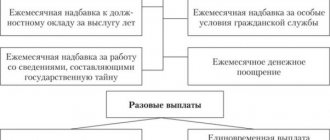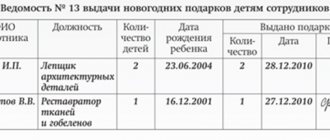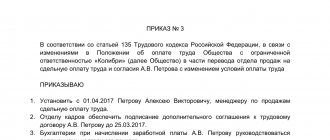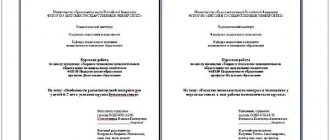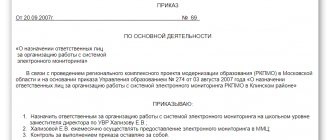In modern conditions, special attention is paid to the level of employee competence. And this is not surprising, because every company wants to see professionals in its ranks who will serve the benefit of the organization with their work. An employee's qualifications are a set of knowledge, skills and abilities necessary to perform a job. The level of training is very important when hiring. Every employer is looking for the best employee for their company, and therefore qualifications are currently coming to the fore.
Educational process
Modern life is such that every person who wants to get a good job and earn decent money must receive an education: higher or secondary specialized. After graduation, the student receives a diploma, but this does not mean that he is now a qualified worker. Certificate of completion of education – level of knowledge. An employee's qualifications are, first of all, experience.
But where can I get it? In many institutions, senior students are sent to practice so that they can learn a little about the profession, not only in theoretical terms. Further, all responsibility falls on the shoulders of the person himself: his qualifications will depend on his personal qualities.
Each student has a different level of knowledge and skills, therefore, when hiring, the employer conducts a personal interview to find out whether this or that person is suitable for him as an employee. The qualifications of education workers determine the level of training of former schoolchildren, so the employer chooses employees from the best universities in the country.
Educational qualifications
Upon graduating from one or another educational institution, a citizen receives a document indicating his qualifications.
The level of qualification of a graduate depends on the level of the educational institution and the course taken:
| Institution level | Qualification | Document confirming qualifications |
| high school | basic school (9 grades) | certificate of basic school education |
| secondary school (11 grades) | certificate of secondary education | |
| secondary vocational educational institution | specialist of a certain profile | diploma of secondary vocational education |
| higher education institution | bachelor | diploma of relevant higher education |
| specialist | diploma of relevant higher education | |
| master | diploma of relevant higher education |
More details about qualifications in higher education (bachelor, master, specialist):
Scientific qualifications
Now in Russia there is a new system for dividing graduates. Previously, everyone was a specialist, but now there are bachelor and master degrees. Opinions are divided regarding this system: some consider it a failure, others, on the contrary, consider it the best. A qualification such as a bachelor's degree can be obtained by a student studying for 4 years; specialists need to obtain knowledge within 5 years.
If a person intends to become a scientist, first he must obtain a master's degree. To do this, you need to spend 6 years in an educational institution. The qualifications of teaching staff have a huge impact on the level of education of students. Professors and associate professors are able to teach students their specialty, thereby preparing competent experts for the country.
Upon graduation, each student is required to write a final thesis, based on the results of which he will be awarded a qualification. This work will determine the student’s theoretical and practical knowledge, as well as the level of his skills.
Skill Levels
The quality of the workforce in our country is determined by qualification categories. They are assigned to workers based on the decision of the certification commission. In factories, industrial workers have a rank. There are 6 types in total, the first is the lowest, and the sixth is the highest.
The Workforce Development Institute divides them into categories. The employee’s salary directly depends on this. It is determined using tariff rates. For an engineer, they are distributed from 0 to 1. These are the values by which the salary is multiplied depending on the category of the employee. For engineers, the degree of rank is determined the other way around: the first is the highest, the second is less qualified, etc.
Each employee has his own job description, which clearly outlines his rights and responsibilities. It is accompanied by a list of qualification requirements, which represent the knowledge and skills of the employee. They are necessary to perform the job successfully.
The professional qualifications of an employee are beyond doubt if he does everything efficiently. Managers value such personnel and strive to improve working conditions. In case of any disputes, the opinion of qualified employees is decisive.
Improving the qualification division of labor is achieved by combining professions, when a worker performs work in different professions or serves several technological operations.
Combining professions does not imply a simple increase in the volume of work performed, but the performance of different types of work, increasing the content of work based on increasing the qualifications of service personnel. The experience of enterprises in the oil refining and petrochemical industries shows that combining professions is one of the most important areas for the effective use of labor resources; it allows rational use of the working time of production personnel, reducing equipment downtime, strengthening labor and production discipline, and reducing staff turnover. [p.64] Planned federal law p. is provided as a directive indicator in the long-term, annual, quarterly and monthly plans of enterprises, associations and sectors of the national economy. The size of the planned F. z. p. is calculated based on the following basic data volume of production for the planned period planned labor costs (labor intensity) by profession, specialty and qualifications of workers the current tariff system and staffing schedules applied wage systems calculation of the required number of main and auxiliary personnel, etc. Planned F. h. p. is established by category of workers, by main divisions, by category of personnel (industrial-production and non-industrial). [p.65] So, this work examines the main points of the budget process of industrial enterprises in Russia. When working on the book, the author, based on his own experience in implementing projects for the implementation of planning and control systems at Russian enterprises, pursued the goal of providing a practical business management tool for domestic industrial companies, taking into account their real state at the moment, the level of accounting, control and planning and analytical work, qualifications of management personnel, established traditions of long-term planning and operational management. The proposed methodological and practical basis for the budget process in industry is not a dogma, but a guide to action. In this regard, three pieces of advice can be given to managers and employees of the management apparatus of Russian enterprises when introducing a comprehensive system of management planning (budgeting). [p.531]
The development of small industrial enterprises (including research and design enterprises engaged in the development of a product with a view to its further development in industrial production) is associated with certain features. The decisive factors here are the increased requirements for the qualifications of workers and the level of management compared to other industries. Start-up costs for labor tools are significantly higher. These circumstances highlight such measures as the implementation at the state level of specialized personnel training programs, financial, credit and property support, as well as the creation of a favorable economic and legal environment. [p.45]
The production capacity of an industrial enterprise is determined by the capacity of the leading workshops, and the capacity of the latter is determined by the capacity of the leading sections or groups of equipment. When assessing production capacity, it must be taken into account that it is a variable quantity. The changes are due to the introduction of technological innovations, materials, specialization and cooperation, improvement of the production structure, increased qualifications of personnel, and improved organization of production and labor. [p.35]
The increase in the number of unprofitable enterprises in Russia is explained by many reasons: the deterioration of fixed production assets, an acute shortage of working capital, barter payments, widespread non-payments of industrial enterprises, the uncompetitiveness of the products of Russian enterprises, low qualifications of management personnel, as well as the breakdown of cooperative and technological ties between enterprises and industries in the CIS . [p.517]
In order to adapt to the changing market situation, independent intermediary enterprises have revised the most important directions of their trade policy. They have embarked on a path of closer cooperation with manufacturers of capital goods. On the one hand, large intermediary firms, using their knowledge of the market, began to develop the characteristics of certain types of products themselves and place (on a voluntary basis) orders for their production among small industrial enterprises. On the other hand, manufacturing companies of means of production, in response to the willingness of intermediaries to cooperate, began to enter into agreements with them on joint advertising and the rights to sell their products in certain regions, provide consultations, and train personnel of intermediary companies at special courses, thereby eliminating gaps in his qualifications. In general, as world experience shows, the rational share of consumers purchasing products directly from manufacturers is 50-70%. This ratio is also typical for our economy. [p.122]
The organization of labor at an industrial enterprise includes the selection, placement, training and advanced training of personnel, technical regulation, rational design and maintenance of workplaces, organization of wages, working hours of personnel, improving working conditions and ensuring their complete safety. [p.87]
The current pace of economic development is associated with the scientific and technological revolution, which is continuously changing the sectoral structure of the economy. New technologies are emerging in all industries, and their share is changing. The number of people employed in agriculture and industry is decreasing, and their number is growing in the service sector, in high-tech industries, etc. Therefore, structural unemployment exists continuously in a modern market economy, its importance within the labor market is increasing and therefore requires the expansion of the system of retraining of workers. There is an urgent need for continuous professional development and retraining of personnel at enterprises. Unemployment of this type is especially characteristic of the modern Russian economy, when some industries are collapsing and others are rapidly developing, especially commercial structures and the mining industry, with a reduction in high-tech industries, light and food industries, mechanical engineering, metalworking, etc. [p.70]
To fulfill contractual obligations for the production of products (works or services) at industrial enterprises, it is necessary to determine the needs of both all personnel in the main activity (industrial production personnel) and workers by profession, qualification and category. [p.53]
The functioning of the CS UKP generates social types of effects that may be reflected in the economic indicators of the production and economic activities of an industrial enterprise or not reflected in the estimated economic indicators, but nevertheless characterize the development of work to improve management within the subsystem - quality management at an industrial enterprise. What social types of effects need to be taken into account when assessing work on the CS UKP. Such indicators are the production of products of the highest quality category, the production of export products, the production of new types of products, losses from defects, the production of products by grade, and complaints. All of the above indicators can have a quantitative form of expression. In addition to them, when determining social effects, it is necessary to take into account indicators that are currently difficult to express quantitatively, but nevertheless they must be taken into account, since they reflect a change in the state of quality management of industrial products—improving the quality of management, the speed of decision-making, the effectiveness of the latter, improving the organization and conditions of managerial work, increasing the efficiency of the management apparatus, improving the qualifications of management personnel. [p.268]
For example, a long-distance telephone exchange may have the switching equipment necessary to service the planned traffic, but does not have the required number of channels in any direction. For an industrial enterprise, such a discrepancy would cause equipment downtime and underutilization of production capacity, and at a station, the entire incoming load may be missed with a deterioration in the quality of service, an increase in waiting time or failure rate (see Section 10.2). This situation cannot be considered acceptable, since the quality of services decreases without changing the payment for them. When coordinating the production capacity of network elements in order to maximally satisfy the demand for services, it is important to establish a correspondence between the volume of available equipment, the labor intensity of its maintenance and the number of appropriately qualified workers. With the automatic provision of a service, workers are alienated from the production of the service, so it is important to plan activities that are aimed at maintaining the required quality of work of communications equipment and personnel (see Chapter 14). [p.132]
The success of implementing the function of leading scientific organizations assigned to the State Scientific Center of the Russian Federation largely depends on the following circumstances. Firstly, on the success of integration processes with the academic and university sectors of scientific activity. Secondly, from the presence of proven mechanisms of interaction between participants in the innovation process (including the organization of interaction with state higher educational institutions and industrial enterprises) in order to promote new technologies into production and improve the qualifications of production personnel. [p.169]
Structural changes in modern society, scientific and technological development, demographic shifts place new demands on the system of school, vocational and higher education, and the organization of continuing education for working personnel. New technologies require not only professional qualifications, but also social competence, civic responsibility, the ability to see relationships, and think creatively. Industrial enterprises in the new conditions must consider the costs of upgrading the skills of their personnel as investments in fixed capital, which allow the most efficient use of modern technologies. In conditions when, on the one hand, industry is experiencing an acute shortage of qualified workers and, on the other hand, the army of unskilled unemployed is increasing, vocational training is the only way to employment, eliminating inequality between women and men in working conditions, ensuring underemployment of women who combine work with family responsibilities. Higher schools are called upon to take on additional functions of personnel retraining. The scale of coverage of the population with lifelong education depends on how widely modern means of communication and mass media, curriculum developers, and users themselves will be used. [p.195]
Industrial enterprises and firms should consider the costs of retraining and upgrading the qualifications of their personnel as investments in fixed capital, which allow the most effective use of the latest technologies. Continuing education is also a factor in stabilizing the workforce at an enterprise. [p.198]
According to the levels of planning and management, consumption and stock standards are divided into industry, associations (all-Union industrial and production) and enterprises. At the enterprise level, standards can be differentiated by drilling, gas production, gas transportation organizations, and technological installations, which are production units (shops). Consumption rates for production units and enterprises are developed for the production of specific products or for specific types of work with a streamlined technological process, rational organization of production and taking into account the required qualifications of the working personnel. [p.6]
Engineering, technical and management personnel of the enterprise improve their qualifications in inter-industry and sectoral institutes and faculties of universities for advanced training and in special faculties in priority areas of development of science and technology, as well as in training groups to improve the level of economic training of specialists in institutes and faculties for advanced training management and engineering workers of the oil and gas industries. [p.132]
The improvement in the financial situation in the Russian economy, especially in the oil industry, has allowed many enterprises to pay attention to the quality of training of their personnel. Some of the employees were trained in various advanced training courses and seminars, and HR services were tasked with constantly searching for and attracting highly qualified and experienced specialists. [p.255]
Industrial and production personnel, according to the instructions of the Central Statistical Office of the USSR, are divided into several categories. This division of industrial and production personnel is determined by the analysis of labor and wage indicators. In addition, unlisted (non-staff) personnel are separately planned and taken into account, and workers - also by profession and qualifications, which is necessary for the provision of labor in accordance with the production plan and a given level of labor productivity, as well as the correct placement of workers in the divisions of the enterprise. [p.42]
Under the influence of scientific and technological progress, positive changes are taking place in the structure of teams of socialist enterprises. Thus, in industry, the share of workers in the total number of industrial production personnel increased from 76% in 1940 to 81% in 1970. At the same time, the proportion of highly qualified workers increased significantly. [p.73]
The main factor influencing the cost of manufacturing molds in specialized plastics processing plants is the capacity of the tool shop and its degree. availability of modern equipment, personnel qualifications and, ultimately, the technical and economic level of the tool shop. An analysis of the work of tool shops at the main specialized plants of the chemical industry showed that in terms of all the indicators listed above, as well as in terms of production volumes, these shops are very different (Table 26). Thus, the share of the area of tool shops in the total area of factories allocated for plastics processing fluctuated in 1970 from 12% (Orekhovo-Zuevsky plant Karbolit) to 47.9% (Kharkov plastics plant), excluding the tool shop Dorogomilovsky NPO Plastik plant (107.8%), which at one time was built to supply equipment to other enterprises. [p.64]
The choice of technology is one of the most important areas of design and should be carried out on an alternative basis, based on the characteristics and indicators given below. The selected technology must meet the capacity of the enterprise, the requirements for the quantity and quality of products, operating conditions, the level of qualifications of operating personnel, environmental requirements for production activities and waste. The choice of technology can also be influenced by factors such as industry, form of foreign participation, industrial development strategy, availability of local resources, etc. However, the most important of them are [p.187]
The decline in the relative level of wages and chronic delays in the payment of wages lead to a significant reduction in the number of employees in the defense complex. At the same time, the most mobile and qualified part of the workers quits, which leads to a decrease in the level of qualifications and the aging of the complex’s personnel. Currently, the average age of OK workers is about 45 years, which is one of the highest indicators among Russian industries. Normal reproduction of engineering and technical personnel of OK enterprises is not ensured. Over the past six years, the number of employees has decreased by more than 2 times, although in 1997-1998. The rate of decline in the number of employees has slowed significantly. [p.228]
Factors determined by scientific and technological progress have caused a direct connection between this orientation and the development of education. American economists have come to the conclusion that its share in the country’s economic growth is at least 1/5. It is estimated that investments in education and training of workers provide significant profits to organizations, and the implementation of HRD programs has reduced the cost of production of a number of enterprises by 50%. US industry alone spends up to $30 billion annually on personnel training. About 1 million people are annually involved in the system of advanced training in management alone. [p.184]
Knowledge recorded in theoretical, scientific, methodological and educational literature, design, technological, design and normative technical documentation developed by specialized industry and departmental organizations, in information, review and abstract funds on advanced scientific, technical and organizational experience, in technical documentation , already used in production, in standards, in descriptions of inventions, in documentation acquired under licenses, and in other documentation received by production and economic organizations, together with knowledge that determines the qualifications of personnel, as well as materialized in means of production purchased from outside (materials , semi-finished products, components, tools, equipment, structures), represent the scientific and technical potential of industrial enterprises and associations. The task of the latter is to master all this knowledge and materialize it in manufactured products and production processes. [p.166]
Special agreements provide for the training of national personnel for these and other large enterprises, but for now there is a large proportion of foreign specialists on their staff. The liquidation of qualified personnel will probably take many more years, especially since in terms of the general level of qualifications of all employees, this group of industries is often placed by researchers in second place after the aviation industry. The performance indicators of hydrocarbon processing enterprises are very important, since soon after commissioning, by the early 80s, they took leading positions in the Libyan manufacturing industry, producing more than half of its gross output [261, p. 73], and, judging by the programs [p.177]
There has been a decrease in the level of qualifications of specialists in the field of industrial safety of chemical production. / At the same time, many modern chemical enterprises pose a significant danger to production personnel, the population living near the enterprise and the natural environment L [p.331]
At the present stage of development of large-scale production with units of large unit capacity, the achievement of the best final results is determined by the reliable, uninterrupted operation of all technological equipment, automation equipment, and the smooth functioning of all levels of servicing production processes. The effectiveness of implementing the achievements of scientific and technological progress in the industry largely depends on the level of qualifications of industrial production personnel, on the further improvement of management at all levels of the workshop—enterprise—association—ministry. This follows from the decisions of the XXVI Party Congress and the May (1982) Plenum of the CPSU Central Committee. [p.295]
In the chemical fiber industry, the capacity utilization factor has decreased on average by 1.3 over the past five years, mainly as a result of the slow development of new production facilities. By the end of the seven-year period, the production of viscose staple fiber at the enterprise PO Box A-7I63 was mastered only 66 times, although it was introduced at the end of 1963. One of the main reasons for the unsatisfactory development of capacity is the insufficient qualifications of service personnel and the lack of staffing of enterprises with the necessary personnel of workers. . [p.65]
Labor shortages are increasingly affecting the operations of chemical industry enterprises. This circumstance, in turn, leads to high staff turnover, decreased qualifications, reduced demands on the part of management personnel and a decrease in labor and production discrimination. With consistently high rates of development of all branches of industry and especially its leading industries - chemical and others, the growth rates of which are especially high, the task of providing personnel in the coming years will become even more complicated. At the same time, an analysis of labor productivity in the industry shows that in the period under review there was a decrease in the growth rate of labor productivity. This was especially evident when calculating the dynamics of labor productivity based on the labor intensity of products (in the context of individual industries). [p.17]
The planned wage fund for industrial production personnel is the amount of money provided in the production cost estimate to pay for all types of labor at a given enterprise. It is calculated in accordance with the planned volume of work, the planned number of workers by category and their distribution by workshop, profession and qualification, the balance of working time, existing systems and forms of wages. Payroll planning is preceded by an analysis of the feasibility of the applied forms and systems of remuneration and the development of measures to improve them. [p.222]
Groups according to qualifications
To determine the level of knowledge of a particular person, there is a special unified tariff schedule. In this regard, there are four main groups of workers based on skill level:
- Unskilled (laborers). Such employees do not have special knowledge; in most cases they have secondary specialized education. They often occupy low positions, such as cleaner, loader, etc.
- Low-skilled. Such workers have been trained for about a month and can perform simple tasks.
- Qualified. They undergo training for 1-2 years and are also practicing specialists. They perform complex work, some are able to lead a group of people.
- Highly qualified. Such employees have higher education, extensive practical experience, and often occupy leadership positions.
Improving the qualifications of medical workers and educational staff is especially important in our time. After all, two main factors in life depend on them: health and level of knowledge.
Types of advanced training
This type of staff training is quite popular, because improving knowledge and skills will benefit not only the employee, but also the organization as a whole. Advanced training for workers in education and other fields of activity can be short-term, medium-term and long-term.
Short-term training takes no more than 72 hours and is usually carried out at the place of work. Highly qualified employees share their knowledge with newcomers. After this, students take an exam, and if successful, they are given certificates of advanced training.
The average duration of training is from 72 to 100 hours. It is relevant if the company introduces new technologies or changes its field of activity. Advanced training of this type is carried out in the form of trainings or seminars.
Long-term training is effective for experienced employees who need to gain new knowledge to perform practical tasks. Such advanced training can also be carried out outside of production. Sometimes employees are sent to another city, but the employee’s position and salary are retained.
Meaning of the word Qualification according to the Financial Dictionary:
Qualification - in labor law, a distinction is made between the QUALIFICATION of a job and the QUALIFICATION of individual workers. QUALIFICATION of work is a characteristic of this type of work, established by the degree of its complexity, accuracy and responsibility. Usually determined by the category to which a given job is classified in the tariff and qualification directory. QUALIFICATIONS of this work are important for establishing tariff rates and official salaries. QUALIFICATION is the degree and type of professional training required to perform a specific type of work.
Features of advanced training
Each profession has its own distinctive features. If we talk about government workers, we can note their division into managers, assistants and advisers. The relevant authorities also have service personnel who perform simple tasks.
There is also a division of positions into groups, such as junior, senior, leading and senior. But this is not true everywhere. Advanced training of teaching staff is aimed at teachers learning modern technologies. In addition, it is necessary to successfully apply knowledge in practice and have a positive work result. Only in this case can the teacher receive the highest category.
The Institute for Advanced Training of Education Workers requires serious training for teachers, because education is currently an integral part of people’s lives. The demands placed on teachers are driven by the desire to increase the level of knowledge of students.
What does it mean
The form of information on labor activity SZV-TD and the procedure for filling it out were approved by Resolution of the Pension Fund Board of December 25, 2019 No. 730p. Among the personnel changes required to be reflected in this report, this document includes the establishment of a second and subsequent profession or other qualification.
In practice, this may be the establishment or assignment of:
- professions;
- specialties;
- categories;
- class rank;
- qualifications;
- qualification category;
- discharge, etc.
Student problem
Employers value highly qualified workers who have extensive experience and know everything about the profession. But what about yesterday's students? After all, it is clear that the company will choose a more experienced representative as an employee. Currently, there are few organizations that are ready to give young people a chance, but what to do?
If a student wants to achieve a high position and become a professional in his field, he will first have to work in low positions. It is advisable to start working as a laboratory assistant or assistant manager in your final years in order to master the practical part of the specialty. In modern realities, knowledge of a foreign language is important. Almost all areas require the ability to speak English. The main thing is to cling to all opportunities for advanced training, because the competence of a specialist depends on it.
Personnel training
Initial training is carried out in educational institutions: institutes, colleges, etc. Future managers must have a higher education; secondary specialized education is enough for workers. An employee's qualifications are the level of training required to perform the duties. To acquire it, the employee is trained always and everywhere.
New employees often hear the phrase: “forget what you were taught in college.” Of course, you shouldn’t do this, but the fact is that in most cases, theory and practice differ significantly from each other. Therefore, employers are forced to provide on-the-job training so that the newcomer understands what is required of him. In addition to practice, the organization tells its theory, thereby preparing employees for work.
Personnel retraining
This type of training is relevant for workers who are learning a new specialty. In essence, there is no fundamental difference between training and retraining. Training can be carried out both on the premises of the enterprise and on the road. Features of employee retraining:
- It is necessary in the case of planned personnel promotion: a person masters, for example, a leadership position, since he has never held one before.
- This type of training is characterized by the fact that a second profession is being studied. That is, a person will already be competent in two specialties.
Training, retraining and advanced training of medical workers, teachers and representatives of other professions have a positive effect on the level of education in the country. After all, the more qualified specialists there are, the better the quality of their services.
The need to improve the qualifications of labor personnel as a factor in the successful development of the organization
The problem of improving the qualifications of labor personnel in modern enterprises is not just an urgent problem, but a requirement of the modern market. This is due to the fact that qualified personnel trained in accordance with modern trends are not only the key to the stable operation of the enterprise, but also the strategic basis for development.
The relevance of training and advanced training of enterprise personnel at the present stage is increasing more and more. This is dictated by the ongoing transformations of the social system, the reorganization of forms of ownership, the replacement of management methods from administrative to motivational-economic, and the development of innovation.
All these circumstances give a qualitatively new content to the process of using labor resources, and, consequently, the study of this process is currently acquiring special significance.
Studying the problems of workforce development aims to find weaknesses in production associated with the use of labor, and to develop recommendations and measures that will not allow the enterprise to reduce the volume and quality of its products or services [4, p. 12].
Improving the training of employees and increasing the importance of their qualifications in professional activities are among the most important components of the complex in a transition economy. The key task of a progressive system of training and advanced training of labor resources is considered to be to overcome established and outdated skills that do not correspond to the modern management system and to acquire more modern professional skills and abilities.
This is due to the need for a scientifically based determination of the mentioned aspects of the need for trained personnel, namely labor resources, of suitable quality and with the presence of the professional properties necessary for the enterprise.
The qualifications of workers in basic criteria are characterized by the above-mentioned aspects, such as general educational technical and necessary qualification knowledge, professionalism and competent mobility. The level of labor is precisely related to this change and the improvement of the technical basis of production and production capacity [1, p.5].
Scientific and technological progress in advanced conditions affects the entire system of production forces, affecting primarily man as the key productive power of society with his ability to work, create material wealth, changing and influencing the circumstances of work, human space in production.
The highest technical level in relation to the rigor of the technological law strongly indicates the correct relationship between labor and means of labor, ahead of the improvement of workers' skills as a promise for the effective use of innovative technologies [3, p. 22].
Also, to comply with the criteria of innovative production, the index of psychological development of labor personnel increases, as a factor in the successful development of the organization, including such elements as: the mental work of the employee, raising the level of his production and corporate culture, the ability to understand and comprehend scientific information.
It should be understood that the priority of the cultural and technical significance of labor personnel is considered one of the criteria that ensures the progressive process of society.
From a financial point of view, the cultural and technical level of a firm or company is an asset that becomes the basis for increasing productivity; here it should be understood that the influence of professional training of workers on the economic efficiency of the organization comes from the fact that workers who have the necessary level of knowledge, skills and abilities , ensure the highest productivity and quality of labor with optimal use of material resources [4, p. 17].
A holistic system of employee training, ensuring the reproduction of a qualified workforce in accordance with the needs of production and its constant technical updating, must be designed to influence the employee throughout his entire activity.
If we look at Russian and foreign experience, it clearly demonstrates that work on professional and qualification advancement is a guarantee of a high-quality personnel management system. One of such advancements is the process of improving the qualifications of labor personnel [5, p. 16].
The subsystem of professional and qualification promotion of labor resources as a factor in the successful development of an organization is a set of forms, methods and means of organizing a systematic, sequential, pre-designed study and promotion of employees from elementary to complex, highly professional work, from low to fairly highly professional levels of professionalism, taking into account the attention of the employee and employer needs.
The provided subsystem is designed to solve the following aspects:
strengthening the qualified workforce at enterprises;
increasing the productivity of personnel;
creating conditions for the employee to obtain the opportunity to work in accordance with his interests and needs;
timely provision of the enterprise with highly qualified personnel;
provision of labor resources to the market segment where unskilled labor is used, with unfavorable labor criteria.
With a properly coordinated organizational system of the organization, professional and qualification improvement and subsequent promotion of labor resources is assigned the role of an internal regulator for coordinating the interests of the functioning of the organization.
Professional and qualification advancement should be closely linked with the introduction of innovations and technology, with the results of an analysis of the relationship between the claims of employees, the content of work presented to them, the important and actual component, the structure of jobs and spaces, the requests of workers for the content and conditions of their own work, for their own professional - qualification promotion, as well as mandatory parts of management, such as career guidance and professional selection of employees [1, p. 11].
It is worth understanding that the need to improve the qualifications of labor personnel, as a factor in the successful development of an organization, is also tied to organizational, economic, social and technical prerequisites: a fairly wide range of professions and jobs in terms of complexity, a developed system of training and retraining of personnel, advanced training, development of collective forms of organization and stimulation of labor, the availability of trained specialists capable of organizing the promotion of workers on a planned basis.
An index indicating the need to improve the skills of workers in any organization is the emerging decline in the average category of workers, the lag of the category of workers from the category of work performed. Another important index may be the increase in defective products or work not completed on time.
The system of advanced training of labor personnel, as a factor in the successful development of the organization, includes:
production and technical courses;
- targeted courses;
schools of advanced techniques and methods of work;
- courses for foremen;
- independent learning.
In its work with labor personnel, enterprise management focuses primarily on the effectiveness of the required material and financial costs and organizational efforts. Such a formulation of the question for an enterprise, say, operating in conditions of self-financing, seems completely justified.
Therefore, the theory and methodology of human resource management should pay great attention to the problem of assessing the effectiveness of personnel management, which has important theoretical and practical significance [5, p.3].
In market relations, there is the same balance between the processes of production and the use of the enterprise's workforce as between supply and demand, costs and results, enterprise income and the standard of living of workers. Any activity of the enterprise’s personnel must fully comply with the existing mechanism of market labor relations in modern production and ensure high growth in labor productivity.
In all economic systems, the main productive force is the person, the personnel of the organization. With his labor he creates material and spiritual values. The higher the human capital in any organization or firm, the better it performs.
People and personnel serve at the enterprise as both economic resources and the main factors of production. Without the interaction of people, workers, there is no production, no consumption, no market.
Literature:
- Batyshev S. Ya. Training of workers / S. Ya. Batyshev. - M.: Economics, 2011. - 248 p.
- Vankevich E.V. Economic problems of the formation of the labor market / E.V. Mankevich. - M.: Misanta LLC, 2013. - 68 p.
- Gorelov N. A. Economics of labor resources / N. A. Gorelov. - M.: Higher School, 2011. - 208 p.
- Gurtova E. S. Socio-economic efficiency of personnel training. Collection of scientific works / E. S. Gurtova. — Sverdlovsk: Economics, 2014. — 140 p.
- Berezhnaya I. A Assessment of knowledge as an element of the strategy of secondary vocational education /I. A. Berezhnaya // Specialist. - 2011.- No. 2. - P. 90.

